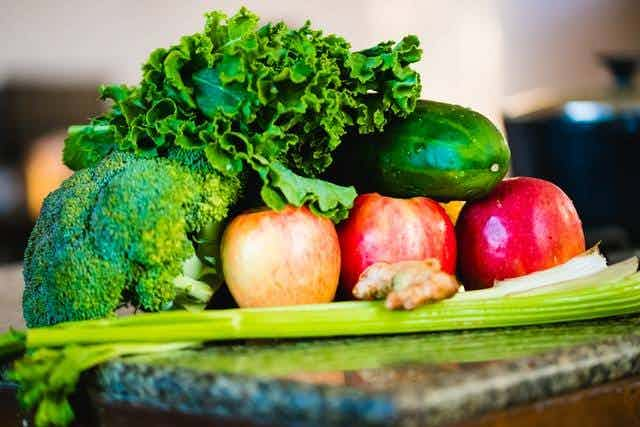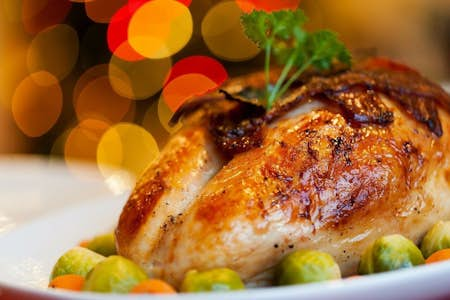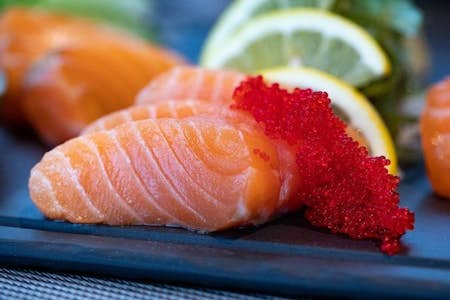As the name might suggest, a low histamine diet is where you eat foods low in histamine. You only need to consider such a diet if you are or suspect you are histamine intolerant. However, it isn't always easy to know if you are histamine intolerant. There are several symptoms you might experience after eating, leaving you unsure of the cause, like typical allergy type responses such as sneezing, coughing or itching. Some allergy sufferers may find a low histamine diet can help ease these symptoms.
Frustrated with food waste or don't know where to start with a shopping list? Try a food subscription box to wash those worries away and put your diet - and finances - on the right track!
What is histamine?
Histamine is likely to be a word you are already familiar with, especially if you tend to suffer from allergies. You might already take antihistamines if you suffer from hay fever or other allergies.
Histamine is a chemical made by your immune system. It is vital to some bodily functions, including the general function of your immune, digestive, and neurological systems. The histamine works by triggering an allergy response to get rid of unwanted allergens in your body. These irritating symptoms are your body’s way of being helpful and getting the allergen out of your body. Your body does this as fast and in any way it can, be it through sneezing, your eyes watering, or out of the skin. The latter of these causes the itch you sometimes get when experiencing an allergic reaction.
So, while you get histamine from foods, it's also a chemical your cells produce themselves. If you have food allergies or intolerances, histamine is also part of the process your body goes through to deal with those intolerances.
When can histamine become a problem?
Histamine becomes a problem if your body is creating too much of it. This is what it means to be histamine intolerant. When this happens, you have too much of a histamine build-up, and your body can’t break it down and get rid of it fast enough.
When your body creates histamine, it also creates an enzyme called diamine oxidase (DAO). This is the enzyme that breaks down histamine when your body no longer needs it. One cause of histamine build-up is DAO deficiency. You can become DAO deficient due to some medications or if you suffer from IBS or other gastrointestinal disorders. You can also have DAO deficiency if you eat many foods with elevated histamine levels.
When your histamine levels go into overdrive, you can experience allergic reactions affecting your day-to-day functioning. If you have a build-up of histamine in your body and then eat high histamine foods, you can make the problem worse. Following a low histamine diet may help you.
What are the common symptoms of histamine intolerance?
The symptoms of histamine intolerance can vary from person to person. It is also easy to mistake histamine intolerance for other health issues. It can be challenging to ascertain if you're suffering from general allergies, intolerances to other foods or chemicals, or if a build-up of histamine in your body is causing the intolerance.
According to Healthline, common symptoms to watch out for are:
- Sneezing or nasal issues
- Hives
- Itching
- Tiredness or fatigue
- Digestive issues, sometimes including nausea and vomiting.
- Irregular menstruation cycles
There are also some more severe symptoms those with higher levels or more sensitivity may suffer with. These include:
- Abdominal pain or cramps
- High blood pressure
- Irregular heartbeat
- Anxiety
- Dizziness
Unfortunately, many of these symptoms can also point to many other health issues, allergies or intolerances. This can make it challenging to narrow down the cause.
Can I get tested for histamine intolerance?
There isn’t a test that will determine whether you are histamine intolerant. The first thing you should do is rule out any other medical causes. Talk to your doctor and discuss any tests they think you should take. Once you have ruled out other causes, start a food diary to help you to pinpoint any problems.
Next, you would start an elimination-style diet for about four weeks, eliminating high histamine foods. Then, you slowly begin to add foods back in one at a time to see which foods cause you a problem. By the end of your elimination diet, you should have a good idea of what you can eat without triggering a reaction. When you have a list of foods you know cause a problem, you can delve into what these foods contain. This should help you determine which allergens or food types are the root cause of your health issues. It is a lengthy process, but worth it if it works and makes you feel healthier.
Tips for following a low histamine diet
Starting any new diet can be a complex process. There is always a learning curve as you learn what you can and can't eat and what you like on the new diet. Remember that you are never alone; there are always others who have been in your position. Some people find it helpful to reach out to online groups for your diet for advice and support. Facebook is a great place to start if you are looking for help.
When you start any new diet based upon a suspected intolerance or allergy, it is worth speaking to your doctor first. They may be able to offer advice and support as you start your journey. It is also good practice to have any dietary notes noted in your medical record should you ever need them.
Write down everything you eat. Make your food diary as detailed as possible with the time of day and exactly what you eat. It is also best to write things down as soon as you can after eating. It is easy to forget everything that went into a meal if you leave it too long before writing it down. Some apps, like MyFitnessPal, can help with this if you don't want to write everything down.
When filling out your food diary, you should also note any issues you have regarding your health. Jot down any symptoms that occur and roughly when you felt them. This will help you to narrow down the list of foods that cause your flare-ups.
A low histamine diet is very restrictive with the types of food you can eat. It is crucial to make sure you are getting all the nutrients you need and may find it helpful to take vitamin supplements. Your doctor can help you with this or refer you to an appropriate nutritionist
You will typically follow a low histamine diet for short periods, so plan to follow it for about four weeks at a time when you need it. The idea is to help your body reduce the high level of histamine back to normal levels. Once you have achieved this, you can include a few extra foods again.
While following this diet, you should cook meals from scratch as much as possible. This ensures you know exactly what ingredients are going into every meal. You will often find many added ingredients in ready meals or even food you eat in a restaurant. You should also ensure your food is as fresh as possible. Bacteria growth on food can cause it to become higher in histamines. Avoid this by keeping food in a fridge until you plan to eat it.
What can you eat on a low histamine diet plan?
A low histamine diet is highly restrictive, especially in the elimination stage of the diet. Don’t worry, this should only last a few weeks, and then you can start to introduce other foods slowly.
It can be a little tricky to define what foods contain high histamine levels because some foods, like meats and cheeses, have an ageing or maturing time. How long a food spends maturing can affect its histamine level.
Use this low histamine food list to help you plan your diet:
- Fresh fruit and vegetables. Exceptions to this are plantains, aubergines, spinach and tomatoes.
- Fresh meat. Keep the meat as fresh as possible before eating, and always keep it in the fridge or freezer.
- Eggs.
- Fresh pasteurised milk, including milk from cows, goats, and sheep.
- Cream cheese and mozzarella; you need to be careful of other aged or matured cheeses.
- Leafy herbs.
- Non-citrus fruit juices.
- Herbal teas. You should avoid black tea and coffee as these can block your body’s production of the DAO enzyme.
- Grains, including white bread, rye bread, rice crackers and rice noodles. However, you should be careful, as these can cause other intolerances to flare up. It isn't unusual for someone with histamine intolerance to also suffer from other food intolerances.
High histamine foods to avoid on a low histamine diet
Some of the foods you should avoid to reduce your histamine intake include:
- Any ready meal or premade meal that you haven’t cooked yourself. You don't know 100% what went into a meal if you haven't cooked it yourself, and some high histamine ingredients may be present.
- Any processed food. Instead, opt for whole foods.
- Alcohol.
- Coffee and black teas; substitute these with herbal teas.
- Aubergines, tomatoes, spinach, and plantains.
- Avoid any types of matured cheeses, including most hard cheeses like cheddar.
- Pickled, tinned, or fermented foods.
- Smoked or processed meats.
- Chocolate and any other foods containing cocoa or chocolate.
- Beans and pulses, including soybeans and any other product made with soy.
- Nuts that are not fresh. These are the nuts you buy in packets that are ready to eat. They are often very salty, too, which is another thing you should avoid whilst on a low histamine diet.
For a complete list of the foods you can and can't eat, check out histamineintolerance.org.uk. There is lots of helpful advice for you can use before you start your low histamine diet.
The low histamine diet
The low histamine diet is still a relatively unknown diet style. Some people find that following this diet can help them to pinpoint the causes of any symptoms they have. It isn’t an easy diet to follow because it is an elimination style of dieting, and is restrictive as a result. However, if it helps, it is worth giving it a try. Always make sure you take medical advice before starting any new diet or significant lifestyle change.








